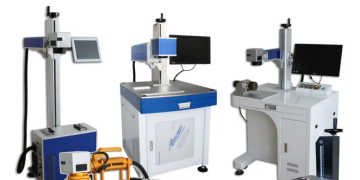Excavators are necessary when the job requires you to move large quantities of soil. They are the popular earthmoving machine that contains a bucket, rotating cab, arm and tracks. These parts provide tremendous mobility and digging power, allowing the machine to execute various functions, from breaking holes and excavating mines to digging trenches and carrying waste.
So, options like SANY’s excavators offer various models, each of which is designed to perform specific tasks. While the smaller vehicles are used in operations that require digging and drilling, the larger machines contain different components and are employed in heavy-duty operations. And this article shall introduce and cover the most common types of excavators.
For those considering advanced solutions for sewer excavation, understanding the right equipment and expert services is crucial. For detailed insights and professional assistance, hop over to this site.
1. Crawler Excavators
These machines run on two massive, endless tracks rather than wheels, as other large excavators do. They are suited for heavy-duty construction and mining operations. The chain wheel system permits them to go down and back up with few risks. This makes them the perfect choice when the operations are conducted on uneven terrains or hilly areas. And although they may be slower than other excavators, they bring great flexibility, stability, and balance into the operations.
2. Wheeled Excavators
These machines are similar to crawlers in size and build but move on wheels rather than tracks. This makes them faster and simpler to manoeuvre on flat surfaces such as asphalt, concrete, etc.
Since the wheels used here do not provide much stability on uneven surfaces, these excavators are used chiefly for urban projects and roadwork operations. However, to increase stability, the operators can employ the outriggers when transitioning from flat to uneven surfaces.
3. Dragline Excavators
Large excavators are available in the ranges offered by some manufacturers, like SANY’s excavators, that perform different tasks. The machine uses a system with hoisting ropes that attach itself with a coupling device to a bucket. The bucket’s other end is tethered to the dragline that runs from the cab to the bucket. The bucket is raised and lowered by the hoist rope.
The draglines are often assembled on-site due to their weight. This type of excavator that uses such a unique system has vast applications in civil engineering projects of large scale, such as projects like canal dreading.
4. Long-Reach Excavators
As the name would suggest, a long-reach excavator machine contains a long arm and boom and is sold by various manufacturers. This design allows the machine to reach difficult spots. The arm can extend over 30 metres horizontally; these machines are best suited for demolition operations like knocking down walls or structural crumbling. And with the addition of various attachments, you can use this machine to perform additional functions, such as crushing, cutting and shearing.
5. Mini Excavators
Over the past few years, many contractors have hired these machines as they are compact and light versions of traditional excavators. This helps lower the chances of ground damage and allows them to fit through narrow sites, indoor spaces and crowded spots. These machines contain additional zero tail-swings or reduced tail-swings to conduct precise turns to avoid coming in contact with obstacles that may cause more damage.
There are various excavators available in today’s market that perform specialised tasks. Each of them tries to overcome the shortcomings of the other with specialised applications. So based on your requirement and the type of operations you are involved in, look for excavators that suit your needs in ranges offered by dependable manufacturers.





























































